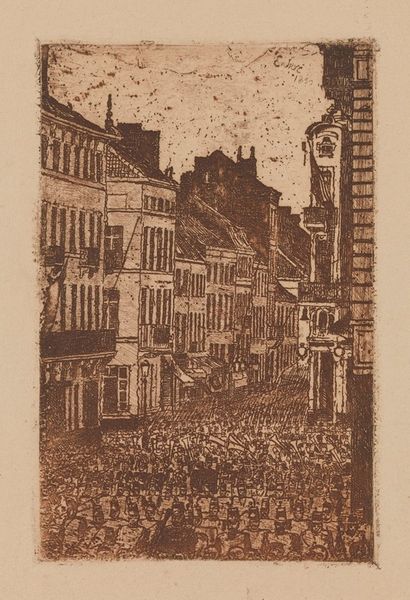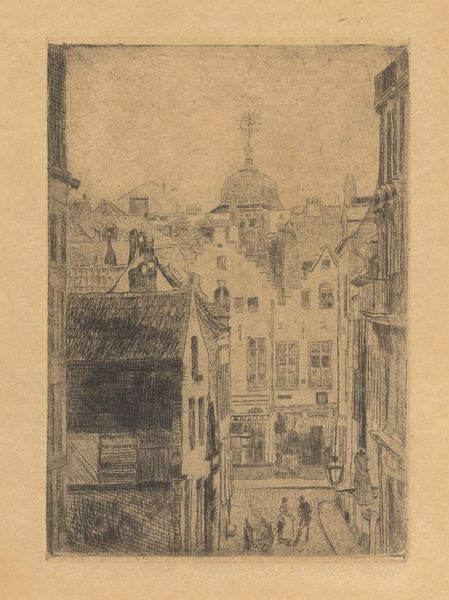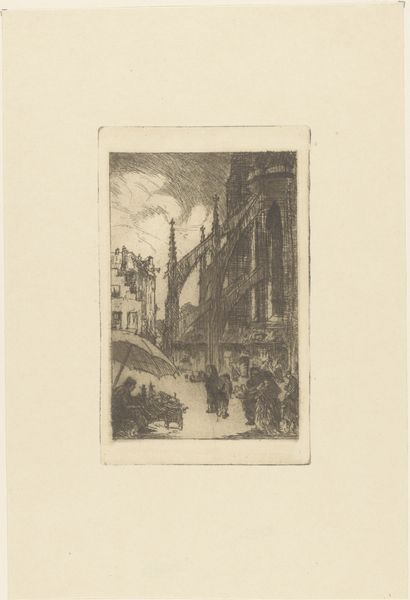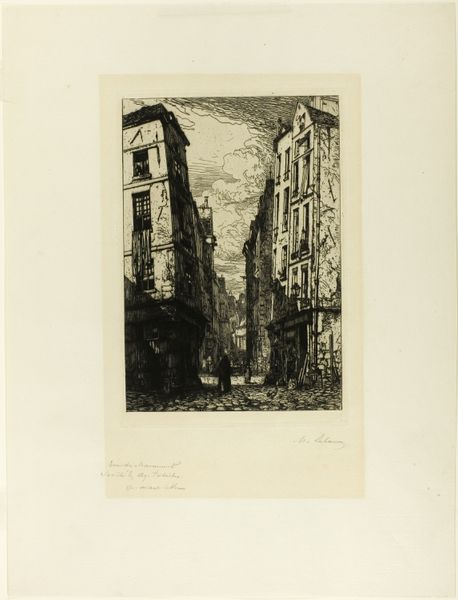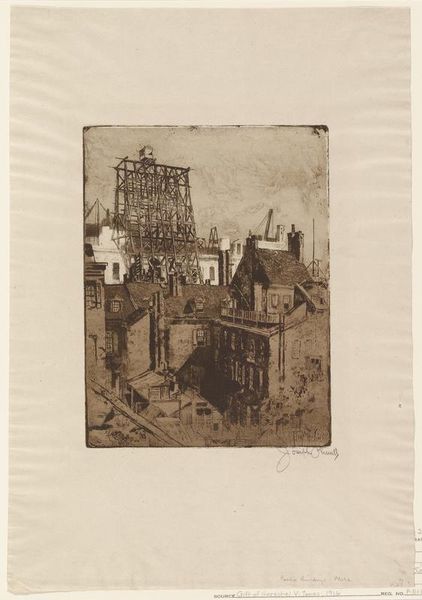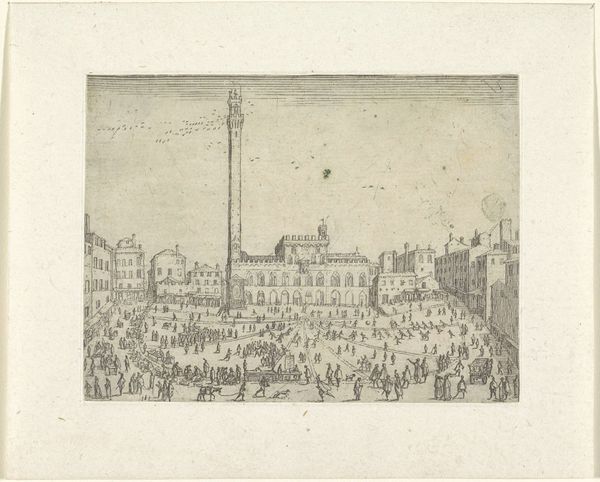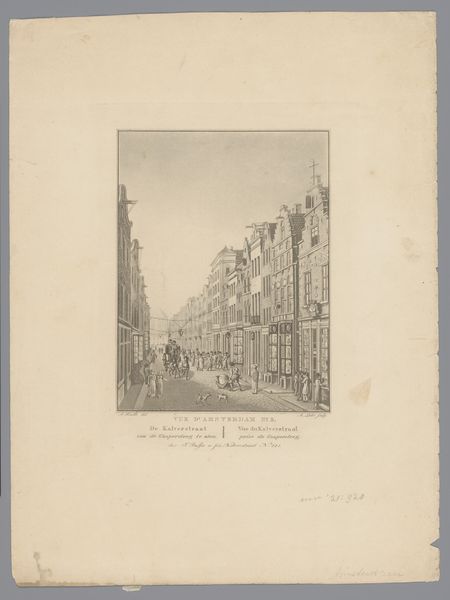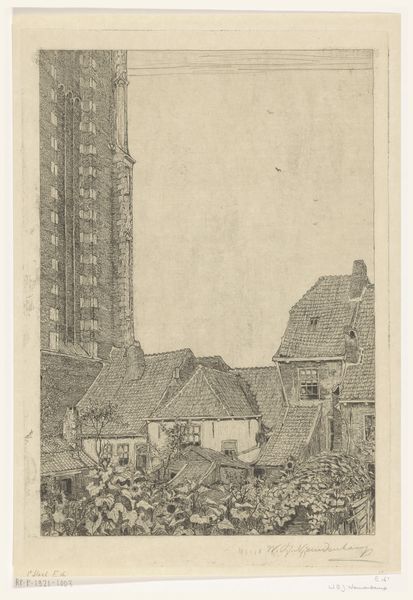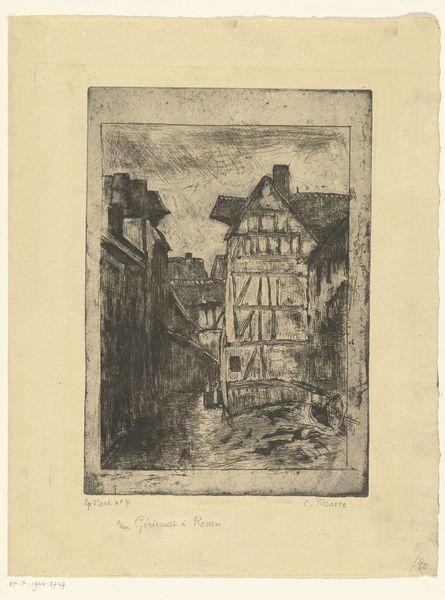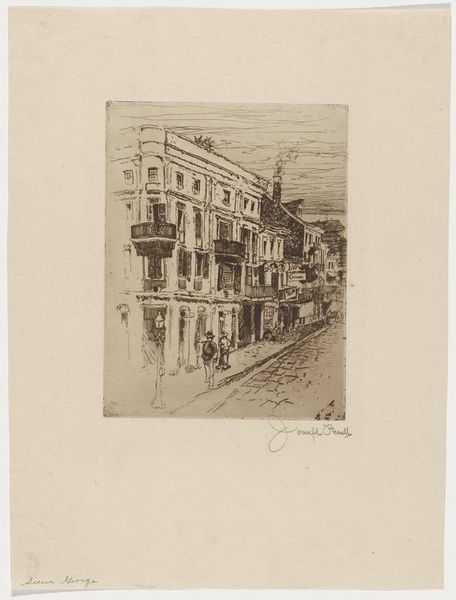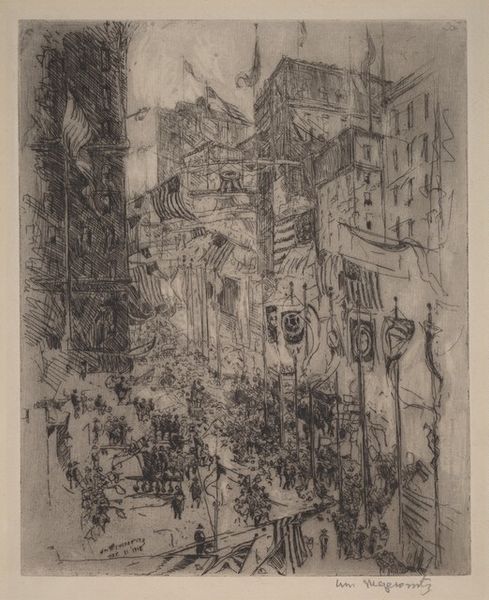
drawing, print, etching
#
drawing
#
art-nouveau
# print
#
etching
#
symbolism
#
cityscape
#
realism
Copyright: Public Domain: Artvee
James Ensor made this etching of the Vlaanderenstraat in Oostende in 1890, using a metal plate and strong acid. This process allowed him to render a complex scene with fine lines and intricate detail. The material of the plate and the corrosive action of the acid give the print its distinctive look. Notice how the lines vary in depth and thickness, creating a sense of depth and texture. This was achieved through meticulous work, applying stopping-out varnish to control the acid's bite. Ensor’s choice of etching aligns with his interest in printmaking as a democratic medium, one that makes art accessible. Yet, it also demanded skilled labor, bridging the gap between craft and fine art. The scene itself, a bustling street, reflects the social and economic life of the time. The labor involved in creating the print mirrors the daily toil of the people depicted. Considering the materials, process, and social context of this print deepens our understanding, and challenges traditional distinctions between high art and craft.
Comments
No comments
Be the first to comment and join the conversation on the ultimate creative platform.
